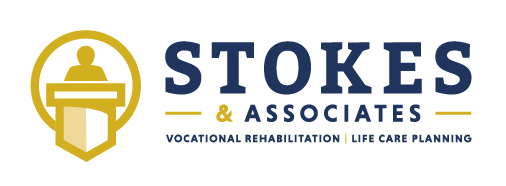Vocational Analysis: Elements in the Process
Vocational Rehabilitation Counselors (VRCs) use the Dictionary of Occupational Titles as a reference text when conducting a vocational analysis. The text categorizes and outlines jobs by several variables that are analyzed by the VRC, including specific vocational preparation (SVP), general educational development (GED), and aptitudes.
The SVP is the typical training or educational time a worker requires to be able to function in an average capacity in that specific occupation. The SVP can range from unskilled to highly skilled. The SVP numbers, from lowest skill to highest skill, include the following:
Short demonstration only
Anything beyond a short demonstration up to one month
One to three months
Three to six months
Six months to one year
One to two years
Two to four years
Four years to ten years
Over ten years
The Dictionary of Occupational Titles also assigns every occupation a GED level for reasoning, math, and language. GED refers to aspects of education required for satisfactory job performance. The reasoning skill levels range from the lowest skill to the highest skill and include the following:
Applying common sense when understanding one to two-step instructions
Applying common sense when following detailed written or verbal instructions
Applying common sense when completing instructions in written, oral, or diagrammatic formats
Using rational systems to solve practical problems with a variety of concrete variables
Using logic and scientific thinking to understand problems, collect information, establish facts, and reach conclusions while dealing with abstract or concrete variables
Using logic and scientific thinking to understand a variety of intellectual and practical problems while dealing with non-verbal symbolism such as scientific equations
The math skill levels also range from the lowest skill to the highest skill and include the following:
Adding and subtracting two-digit numbers, performing simple multiplication and division
Adding, subtracting, multiplying, and dividing all units of measure and having the ability to work with decimals, fractions, ratios, rates, and percentages
Performing basic geometry, algebra, and having the ability to calculate interest, discounts, volumes, weights, and measures
Performing intermediate algebra, geometry, and shop math
Having the ability to perform advanced algebra, basic calculus, and basic statistics
Having the ability to perform advanced calculus, modern algebra, and advanced statistics
The language skill levels also range from the lowest skill to the highest skill and include reading, writing, and speaking. The language skills are based on grade equivalent as follows:
1st to 3rd grade
4th to 6th grade
7th to 8th grade
High school
College/graduate level
The Dictionary of Occupational Titles also assigns an occupation-specific aptitude level. Aptitudes refer to the ability to perform or learn a given work activity, and there are 11 aptitudes measurable in an occupation. The aptitudes are general learning ability, verbal ability, numerical ability, spatial ability, form perception, clerical perception, motor coordination, finger dexterity, manual dexterity, eye/hand/foot coordination, and color discrimination.
These are just a few of the variables analyzed by the VRC when developing a transferrable skills analysis. By understanding the individual’s skill level, general educational development, and aptitude levels of their work history, the Vocational Rehabilitation Counselor is better able to assess future employment options and vocational prognosis.
We offer complimentary consultations concerning "hypothetical matters." To strategize with one of our life care plan or vocational experts at Stokes & Associates, please call David Barrett at 504-454-5009 or email dbarrett@stokesassociates.com.
Larry S. Stokes, Ph.D.
Aaron Wolfson, Ph.D.
Lacy Sapp, Ph.D.
Todd Capielano, M.Ed., LRC, CRC, LPC, CLC
Ashley Lastrapes, MHS, CRC, CCM, CLCP, LPC, LRC
